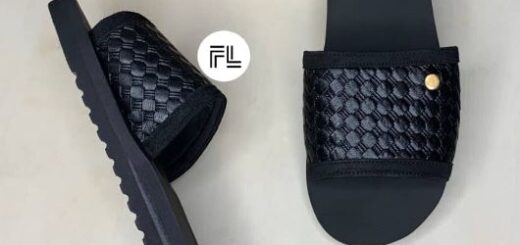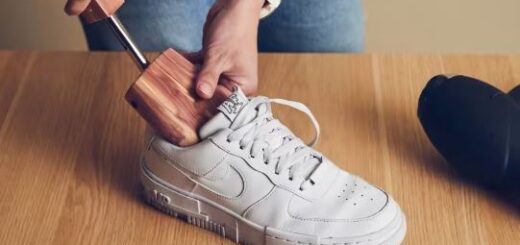No More Guesswork: The Simplest Way to Measure Your Feet at Home
Simplifying Foot Measurement for Online Shoe Shopping
In today’s digital age, shopping for shoes online has become more common than ever. However, one significant hurdle persists: accurately determining foot size. While this issue concerns shoppers, it also challenges brands and retailers who often make the measurement process more complex than it needs to be. With only a few critical data points to work with when selling shoes virtually, it’s crucial to collect them as precisely and consistently as possible.
Despite advancements in retail, the methods used to gauge foot size remain outdated or unnecessarily intricate. Many techniques, such as drawing outlines or using pens and paper, introduce unnecessary complications. It’s time to rethink the approach.

How Shoe Fitting Has Evolved Over Time
Not long ago, shoe shopping was a hands-on, guided experience. Customers visited local shops where knowledgeable staff members assisted in selecting the correct size. Using tools like the Brannock device, these specialists measured foot length and width, and offered multiple options for fit and comfort. Shoppers typically tried on various sizes, ensuring they left with shoes that felt right.
Errors still occurred, mostly due to misinformation or limited product availability, but the risks were relatively minimal. A key difference then was the wider range of widths and fits that manufacturers produced, offering better alignment with individual foot shapes.
However, retail has changed. As stores grew larger and prioritized high-volume sales, the personal touch began to fade. Shoe boxes were stacked for customer browsing, and staff assistance became optional. As a result, fewer people received proper guidance, and the available size options became more standardized. The consequence? A noticeable increase in poor-fitting purchases.
The Shift Toward Digital Retail
Fast forward to the mid-2020s, and nearly 40% of global shoe purchases are made online. While this convenience is unmatched, it comes with its own set of challenges—chief among them being improper fit. Many people still wear shoes that don’t align with their foot shape, either due to insufficient information or inaccurate measurement methods.
Although readers of footwear-focused platforms may be more aware of proper fit than the average consumer, the truth is that even seasoned enthusiasts occasionally choose the wrong size. Whether it’s from habit, misjudgment, or simply relying on flawed measuring tools, it’s a widespread issue. Accurate fit is a nuanced topic, further complicated by personal preferences, past experiences, and the varied way that shoes are made.
Measurement Devices: A Tool, Not a Solution
Professional devices like the Brannock remain valuable when used correctly by trained individuals. They allow for more reliable sizing guidance—particularly useful when incorporated into an online store’s support system. But they’re not ideal for remote self-measurement. When customers are expected to handle measurements independently, consistency and simplicity become paramount.
Retailers and manufacturers frequently recommend methods that seem practical on the surface but are riddled with potential errors. Asking people to trace their feet with a pencil or mark outlines on paper might seem straightforward, but it often leads to inaccurate readings.
Why Foot Outlines Are Unreliable
Tracing feet on paper is one of the most commonly suggested techniques, but it has numerous drawbacks. People use different types of writing tools—some thick, some thin—hold the pencil at varying angles, or accidentally shift during the process. Even small inconsistencies in hand movement can add or subtract millimeters, throwing off the final size. This becomes even more problematic when the measured outlines are then compared to generic size charts or when customers are told to subtract a set amount to “adjust” for pencil width.
Some brands take this a step further, requesting width measurements or additional foot dimensions from the outlines. While the intention is good, it often creates more confusion. Due to inconsistent execution, the data collected becomes unreliable, leading to misfitted shoes and frustrated customers.
Focus on Uniformity and Ease
When it comes to self-measurement, what truly matters is consistency. If every customer follows the same, simple method, brands can better analyze the data and compare it to internal sizing standards. It allows companies to detect fit patterns and assess whether sizing advice needs tweaking.
At Skolyx, where we help thousands of customers each year both online and in-person, we’ve tested numerous methods. Over time, one approach has proven most effective in gathering reliable foot length data from remote customers. It eliminates ambiguity and reduces the risk of measurement errors.
The Most Reliable Method for Measuring Foot Length
Here’s how to measure your feet accurately at home using nothing more than a ruler and a wall:
- Place a ruler or tape measure on a flat surface, extending straight out from the base of a wall.
- Align your heels so they rest snugly against the wall.
- Ensure the measuring device is centered between both feet and lies flat.
- Stand naturally, wearing the type of socks you intend to use with the shoes—thin dress socks, thick winter socks, or none at all.
- Check the distance from the wall to your longest toe (often the big toe, but not always). If a different toe extends further, place a book or similar object at a right angle over the ruler to identify the longest point.
- Record the exact measurement in millimeters for each foot.
This approach is simple enough for anyone to follow and produces consistent results. Since it captures the full foot length directly, it’s comparable to data provided by shoe manufacturers or lastmakers who use internal measuring sticks or digital modeling. It also removes the guesswork and variance that come with more subjective methods.

Why Foot Length Matters Most
Though foot shape, arch height, and volume also affect how a shoe fits, length is the foundational metric. A shoe that’s too short can never be comfortable, regardless of how well it fits in other areas. By establishing an accurate length baseline, brands and shoppers can better identify the right size, and then refine fit through additional communication.
Length also helps brands make informed comparisons across different models or styles. When customers supply consistent measurements, the retailer can better interpret fit outcomes and adjust recommendations for future shoppers. This results in fewer returns, better customer satisfaction, and more efficient service.
What About Width and Other Dimensions?
Some may argue that measuring foot width or volume is just as important as length. While true in theory, executing these measurements remotely is far more difficult. Unlike length, which can be measured directly from point to point, width and volume often rely on circumferential measurements or subjective impressions.
For instance, someone with low arches may appear to have wide feet in a flat two-dimensional measurement, even if their actual foot circumference falls within average ranges. Conversely, customers with fleshy or high-volume feet may underestimate their width if the measuring tape isn’t pulled tightly enough. These types of measurements are rarely executed consistently and therefore don’t provide dependable data.
That said, customers often have a general awareness of whether their feet are narrow, wide, high-arched, or flat. These self-assessments, when communicated clearly, can support length measurements and help retailers fine-tune size recommendations. For those with special foot shapes, sharing additional details—such as photos, known fit issues, or favorite well-fitting brands—can provide valuable context.
Lessons from Bespoke Shoemaking
Custom shoemakers take multiple measurements to create the perfect fit. However, these professionals conduct all measurements themselves, ensuring that every dimension is gathered using the same technique each time. This level of detail is necessary for handcrafted footwear but isn’t realistic for mass-market or online retail settings.
In the online environment, asking customers to provide a wide range of measurements introduces more opportunities for error. It’s better to focus on collecting one or two accurate measurements that are easy to replicate. By doing so, brands can develop a reliable sizing system and gradually refine it using consistent data.
Moving Toward a Better Fit Experience
In the end, the goal is to create a process that works—for both the buyer and the seller. Encouraging customers to use a simple, standardized method for measuring foot length reduces the risk of poor sizing and builds confidence in the brand. When the input data is consistent, retailers can trust the feedback they receive and improve their offerings accordingly.
While there will always be some trial and error in online shoe shopping, that doesn’t mean the process has to be guesswork. With a clear, replicable measuring method and open communication between brands and customers, it’s possible to dramatically reduce size-related returns and improve the overall experience.
In a world where convenience is king, accuracy is the key to standing out. Simplify the process, build trust, and let the shoes speak for themselves.

Frequently Asked Questions about Feet Measurement
What is the main problem with current foot measurement methods?
Many methods rely on tracing feet on paper, which introduces human error due to variations in tools, angles, and technique.
Why is accurate foot measurement crucial for online shoe shopping?
Because online retailers have limited data to assess fit, accurate measurements ensure better sizing recommendations and reduce returns.
What’s wrong with using foot outlines?
Foot outlines often vary depending on how the pencil is held or how carefully the outline is drawn, leading to inconsistent and unreliable measurements.
What is the most reliable way to measure foot length at home?
Stand with your heel against a wall and measure from the wall to the longest toe using a straight ruler or tape measure placed on the floor.
Should both feet be measured?
Yes, always measure both feet, as it’s common for one foot to be slightly longer than the other. Use the longer measurement when choosing size.
Can foot width and shape be measured accurately at home?
Not easily. While width matters, it’s hard to measure accurately without professional tools, and improper technique often gives misleading results.
Is foot length alone enough to determine shoe size?
It’s the most critical starting point, though additional factors like width, instep height, and shape still play a role in overall fit.
How can retailers improve sizing accuracy online?
By standardizing the measurement method they recommend to customers and collecting consistent data over time to refine sizing advice.
Are Brannock devices useful for online fitting?
They are reliable in-store but impractical for at-home use unless customers are trained to use them correctly and consistently.
Why do people often wear poorly fitting shoes?
Because of a mix of poor measurement, brand size inconsistencies, and personal preferences that favor style or habit over proper fit.
Can preferences affect shoe sizing?
Yes, some customers prefer tight or loose fits, and this subjective factor needs to be considered alongside objective foot measurements.
What should be done if a customer has unusual feet?
Retailers should request extra information—like foot photos, past size history, and fit preferences—to offer better recommendations.







